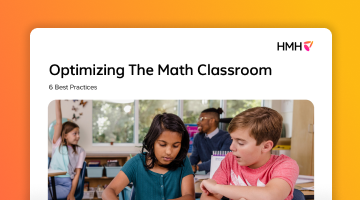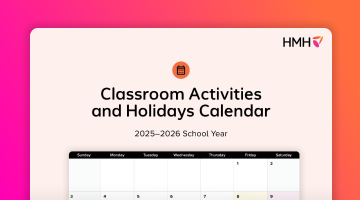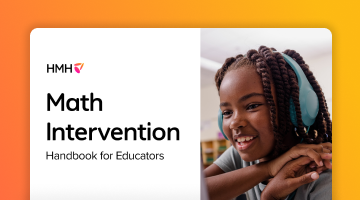
Multilingual learners (MLLS or MLs) are the fastest-growing subgroup in U.S. public schools, now representing over 5.3 million students—about 11% of total enrollment. These students speak over 400 languages, with Spanish, Arabic, Chinese, and Vietnamese among the most common. According to projections from the National Association for the Education of Young Children (NAEYC), the EL population will continue this rapid growth.
Since multilingual learners have such varying backgrounds and levels of proficiency, a variety of different terms have emerged in education. Some terms refer to subsets of multilingual learners, and others identify the types of educational initiatives and curricular programs developed to support the success of these students. Terminology used can vary widely across the country and is often specific to states or regions based on the needs of their unique multilingual learner populations. This can lead to confusion around terminology, especially as populations and initiatives shift.
One such term is ESL, or English as a second language. The meaning of ESL in education generally references curricular programs to support English acquisition, but it is not used as widely in education as it was in the past.
ESL definition
ESL (English as a second language) is English instruction for non-English speakers who are living in an English-speaking environment. The meaning of ESL in U.S. education usually refers to a curricular program or initiative providing instruction specifically for English language acquisition.
Below is a quick guide of other acronyms used in this article.
| Acronym | What it stands for | Meaning |
| ML or MLL | Multilingual learner | A student developing proficiency in two or more languages |
| ESL | English as a second language | The study of English by students for whom English is not their first language |
| ENL | English as a new language | Used in New York state to describe the study of English by students for whom English is not their first language |
| EFL | English as a foreign language | The study of English in a non-English speaking environment |
| ESOL | English to speakers of other languages | A broad term that refers to learning English regardless of whether the learner is in an English or non-English-speaking country |
| ELD | English language development | Descriptor for a curriculum or educational program that is dedicated to English acquisition |
| EB | Emergent bilingual | A student developing proficiency in both their home language and English |
| EL or ELL | English learner/English language learner | A subset of MLs who do not yet meet the criteria set by the state to classify as proficient in English |
| WIDA | World-class Instructional Design and Assessment | A consortium of states and territories that provides resources and assessments for multilingual learners. In WIDA states, MLs take the ACCESS ELP test |
| ELP | English language proficiency | Descriptor most commonly used to refer to assessments taken by multilingual learner to assess English proficiency |
Shifting terminology: What does ESL stand for in education? How does it compare to ESOL, ELD, EFL, ENL, and bilingual education?
Previously utilized as the primary term to refer to English acquisition instruction in U.S. schools, ESL is no longer as widely used. There has been a shift to use alternative terms that may better fit the multilingual learner population. An effort to use asset-based language, or language that focuses more on recognizing the strengths and assets of multilingual learners. This shift in terminology is aligned with standards frameworks like WIDA and reflects a broader movement toward recognizing and leveraging student strengths to build confidence and influence positive student outcomes.
Deficit-based language:
- Focuses on what students lack or cannot do.
- Often centers English as the only valid or valued language.
- Can unintentionally lower expectations and reinforce stereotypes.
- Emphasizes gaps, struggles, or remediation.
By contrast, asset-based language:
- Recognizes and values students’ home languages and cultures.
- Emphasizes what students bring to the classroom
- Encourages high expectations and inclusive practices.
- Frames language development as a process, not a problem.
A few states still formally employ the term “ESL” in their public-facing documentation, and some are in a period of transition towards more asset-based terms. In these transition states, mixed terminology may be used both formally and informally. For example, the state of New York officially uses the more all-encompassing term “ENL”—English as a new language—but ESL may occasionally appear in school or district-level documentation or conversations throughout the state. Texas, as another example, uses ESL in some places depending upon the district and instructional model.
Two other terms that are less commonly used in the U.S. are EFL (English as a foreign language) and ESOL (English for speakers of other languages). EFL describes learning English in a non-English speaking country, and ESOL is a broad term that can encompass both ESL and EFL, referring to learning English regardless of whether the learner is in an English or non-English-speaking country.
The more commonly used term to name instruction specifically related to English acquisition in U.S. schools is dedicated English language development (ELD). “Dedicated” (or “designated” in some regions) means that schools have set aside time to provide multilingual learners with direct instruction to acquire English language skills. A middle or high school student’s ELD class will appear on their schedule as a distinct course separate from their English language arts, math, science, social studies, and elective courses.
Multilingual learners also need scaffolding, support, and resources appropriate to their English proficiency level to equitably access English content in their core classes. These language scaffolds and resources in the context of core courses are referred to as “integrated” ELD.
Bilingual education is another instructional model for MLs that differs from ELD instruction. In a bilingual instructional setting, teaching and learning takes place in two languages, typically the student’s first language and English as a target language. It allows students to continue developing their language skills and proficiency in their primary language while also supporting English acquisition. Students who are in bilingual education programs may be referred to as emergent bilinguals (EB).
What is the purpose of ESL in schools?
Whether your district refers to instruction for English language acquisition as ESL, ELD, or something else, a research-based English language development curriculum is critical to the overall academic success of multilingual learners. Effective ELD instruction for language-diverse students must:
- Leverage students’ cultural and linguistic knowledge as assets and build from them as they acquire English.
- Explicitly teach language functions and features through structured routines.
- Provide proficiency-level-aligned scaffolds to support equitable access to content in English in all classes.
- Foster understanding of various cultures, backgrounds, and life experiences.

Why is ESL important?
An effective ESL or ELD curriculum can propel multilingual learners to success in their K-12 education, college, career, and beyond. It enhances educational access and opportunity, builds communication skills essential for academic and social success, and supports long-term academic achievement and career readiness. Every student’s voice, language, and cultural background are critical assets that enrich learning experiences and enhance school communities. Productive ELD instruction provides as many access points as possible, allowing all students to feel respected, empowered, and confident in their ability to succeed.
Separating the learner from the instruction: ELL vs. ESL
With so many acronyms, it can be easy to confuse the terminology around English language instruction versus the English language learners. It’s important to recognize the difference between terminology that references an instructional approach to learning English (such as ELD, ESL, or ESOL) and terminology that refers to different types of multilingual learners (such as MLL/ML or ELL).
HMH uses multilingual learner as an umbrella term to refer to all students who are engaged in developing two or more languages. The term multilingual learner emphasizes the benefits of speaking multiple languages and recognizes that students learning English bring rich assets from their primary language and culture to their classrooms. ML is also the term now recognized by WIDA and being adopted by states that use the WIDA ELD framework.
English learners are a subset of MLs who do not yet meet the criteria set by the state to classify as proficient in English, and therefore require ongoing dedicated and integrated ELD. EL is used in contexts that are specific to test data and in reference to federal funding. There are over 5 million ELs in U.S. K-12 public schools, but there are many other students in U.S. schools for whom English is not their first language. These students who are not identified as ELs and not receiving formal English Language Development support are still engaged in learning and/or using multiple languages. They may be students who have reclassified as proficient in their state English language proficiency (ELP) test, students who are already bilingual, or students who do not access dedicated ELD instruction for other reasons, such as parental preference. It's important to note that these students still benefit from integrated language scaffolds in their core classes, so their teachers will need to differentiate instruction for them as needed.
ESL in education: Part of the larger multilingual learner landscape
Effective ESL in schools should empower students to share their stories, build confidence, and thrive academically and socially in their school communities. It’s critical to recognize that the language diversity of multilingual learners is a strength, not a barrier. The terminology we use can impact the way our multilingual learners think about their own capacity for success and affect their educational outcomes. Even in regions that might use deficit-based terminology, teachers can consider adjusting some of the language they use with students to focus more on their strengths and their capacity for success. Language has power, and educators can use the power of asset-based language to support students’ achievement.
***
Build on multilingual learners' existing linguistic strengths and accelerate English proficiency in grades K–12 with English 3D.
Download our free guide to using response frames with multilingual learners.









